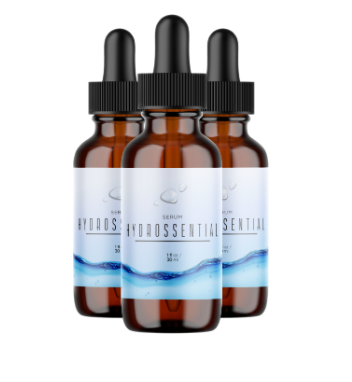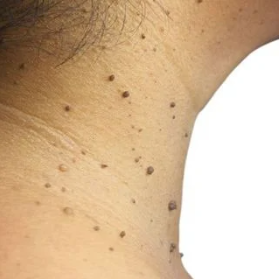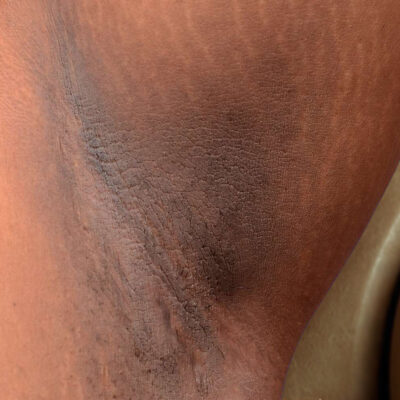What Age Is Mature Skin?
Disclosure: Some of the links in this article may be affiliate links, which means we may receive a small commission at no cost to you should you decide to make a purchase through one of our recommended partners. We only recommend products and services we trust and believe will be beneficial to our readers.
What Age Is Mature Skin? Understanding When Skin Begins to Change
What age is mature skin? This is a question many people start asking as they notice changes in their complexion. Mature skin typically begins to show noticeable signs around 40, but the aging process varies for everyone. Collagen production slows, hydration levels drop, and elasticity weakens, leading to fine lines, dryness, and a loss of firmness. Understanding when skin is considered mature allows you to adapt your skincare routine and maintain a healthy, radiant complexion.
This article is for women and men in their 40s, 50s, and beyond who are noticing shifts in their skin. If you’ve started seeing fine lines deepen, your skin feeling drier, or your once-firm complexion losing elasticity, this guide will help you understand why—and what you can do to support your skin’s changing needs.
We’ll cover the key signs of mature skin, the science behind aging, and skincare solutions that truly make a difference. Hydration, sun protection, and anti-aging ingredients like retinol and peptides all play a crucial role in keeping your skin strong, supple, and glowing. Keep reading for expert-backed skincare practices and product recommendations tailored for mature skin.
5 Signs That Indicate Your Skin Has Matured
Mature skin is not just about age; it’s about the changes that occur over time. Recognizing these changes helps you adapt your skincare routine to keep your skin looking its best.
1. What Age Is Mature Skin More Prone to Dryness? Loss of Moisture and Hydration
As the skin matures, its ability to retain moisture weakens, leading to dryness, flakiness, and a dull complexion. This is due to a natural decline in hyaluronic acid production, which keeps skin plump and hydrated. Additionally, the skin’s lipid barrier weakens, making it harder to lock in moisture and protect against environmental damage. This can result in increased sensitivity, redness, and irritation, especially during colder months or in dry climates.
Another contributing factor is slower sebum production. While this may reduce breakouts, it also means the skin struggles to maintain its natural oils, making it feel rough and tight. Without proper hydration, fine lines appear more pronounced, and the skin loses its soft, supple feel.
What to Use:
To restore moisture, use a hyaluronic acid serum like Vichy Mineral 89 Hyaluronic Acid Booster, followed by a ceramide-rich moisturizer such as Eucerin Advanced Repair Face Cream. For an extra boost, adding a facial oil with squalane or rosehip seed oil at night can help seal in hydration and prevent water loss while you sleep.
2. How Mature Skin Develops Fine Lines, Wrinkles, and Deep Creases
Collagen and elastin—the proteins that keep skin firm and elastic—start declining in the late 20s. By 40, this loss is more noticeable, particularly around the eyes, mouth, and forehead. This happens because skin cell turnover slows, meaning the body produces fewer fresh skin cells to replace older ones. Additionally, repetitive facial expressions, such as frowning or smiling, deepen wrinkles over time.
External factors accelerate the process. Sun exposure, pollution, and lifestyle habits like smoking and poor diet break down collagen even faster. Dehydration can also make fine lines appear worse, as dry skin tends to wrinkle more easily than well-hydrated skin.
What to Use:
Using retinol or bakuchiol-based treatments can encourage collagen production. Neutrogena Rapid Wrinkle Repair Retinol Night Cream is an effective option for smoothing fine lines. Peptides, found in Olay Regenerist Micro-Sculpting Cream, also support skin repair and firming. Hydration is key as well—plumping ingredients like glycerin and hyaluronic acid can temporarily soften wrinkles and make skin appear smoother.
3. Why Mature Skin Becomes Thinner and Loses Elasticity
Mature skin becomes thinner due to the breakdown of collagen and elastin fibers. As a result, it loses firmness, making sagging more prominent—especially around the jawline, cheeks, and neck. Thin skin is also more prone to bruising and visible veins, as the protective fatty layer beneath the skin diminishes over time.
Hormonal changes, particularly the decline in estrogen, contribute to this process. Postmenopausal women often experience more pronounced skin thinning due to reduced estrogen levels, which play a role in maintaining skin density. Additionally, decreased blood circulation can make the skin look dull and tired, as fewer nutrients reach the surface.
What to Use:
A diet rich in omega-3 fatty acids, protein, and antioxidants can support skin elasticity from within. Skincare products containing growth factors and peptides, like RoC Multi Correxion 5-in-1 Chest, Neck & Face Cream, help reinforce the skin’s structure. Facial massage and microcurrent devices can also stimulate circulation and strengthen sagging areas.
4. What Causes Uneven Skin Tone and Hyperpigmentation in Mature Skin?
Years of sun exposure, hormonal shifts, and environmental pollutants contribute to dark spots, uneven skin tone, and persistent redness. UV rays trigger excess melanin production, leading to age spots (also called sun spots or liver spots) on the face, hands, and chest. Hormonal changes, particularly during pregnancy or menopause, can cause melasma, a type of hyperpigmentation that appears as dark patches on the skin.
Inflammation also plays a role in uneven tone. Chronic exposure to pollutants and blue light from screens can accelerate oxidative stress, leading to redness, blotchiness, and an overall dull complexion.
What to Use:
Vitamin C serums, niacinamide, and exfoliating acids like glycolic or lactic acid can fade dark spots and improve brightness. LuminaSkin C E Ferulic Acid is a top-rated vitamin C serum that helps brighten and protect skin. Additionally, daily SPF use is non-negotiable—EltaMD UV Clear SPF 46 protects against further sun damage while calming redness.
5. Slower Cell Turnover and Dullness: A Common Concern for Mature Skin
In younger skin, dead skin cells shed naturally every 28 days, revealing fresh, radiant skin. However, as the skin matures, this process slows to 40-50 days or more, causing a buildup of dead skin cells that leads to dullness, rough texture, and clogged pores.
A sluggish turnover rate also means that skincare products don’t absorb as effectively, reducing their impact. Over time, this can make the skin look tired and lifeless, no matter how well it’s hydrated.
What to Use:
Gentle chemical exfoliation with AHAs or BHAs can encourage cell turnover. Paula’s Choice Skin Perfecting 2% BHA Liquid Exfoliant helps remove dead skin while minimizing pores. Lactic acid-based peels are another excellent choice, as they brighten without excessive irritation.
How to Care for Mature Skin at Every Stage
Hydrating Mature Skin From the Inside and Out
Drinking water alone won’t fix dehydration, as the skin barrier needs external support. Layering moisture is key—start with a hyaluronic acid serum, seal it in with a ceramide-based moisturizer, and finish with a face oil for extra protection.
Why Sun Protection Is Essential for Mature Skin
Sunscreen is the most effective anti-aging product available. UV exposure breaks down collagen, weakens the skin barrier, and deepens wrinkles. A broad-spectrum SPF 30 or higher, such as La Roche-Posay Anthelios Melt-in Sunscreen, should be part of your daily routine—even indoors, as blue light can also contribute to skin aging.
Choosing the Right Cleanser for Mature Skin
Harsh cleansers strip away natural oils, leaving mature skin even drier. A non-foaming, creamy cleanser, like CeraVe Hydrating Facial Cleanser, cleanses without disrupting the skin barrier. Double cleansing at night (starting with an oil-based cleanser) can also remove sunscreen and makeup more effectively.
Boosting Mature Skin With Antioxidants and Nutrient-Rich Skincare
Antioxidants neutralize free radicals, which accelerate aging. Ingredients like vitamin C, green tea extract, and resveratrol help protect against damage and enhance radiance. Polyphenols from green tea also soothe inflammation and reduce redness.
Caring for the Neck and Hands: Areas That Show Signs of Mature Skin First
The neck and hands often show aging before the face, yet they are frequently overlooked. Applying the same serums, moisturizers, and SPF to these areas ensures a more youthful appearance. Products like StriVectin TL Advanced Tightening Neck Cream can help firm and hydrate.
So, what age is mature skin? While most people notice significant changes by 40, the reality is that skin ages at its own pace. Genetics, lifestyle, and skincare habits all play a role. The good news? You have control over how well your skin ages.
By prioritizing deep hydration, daily sun protection, and proven anti-aging ingredients like retinol, peptides, and vitamin C, you can strengthen your skin and keep it looking radiant. Gentle care, consistency, and the right products will help slow visible signs of aging and enhance your skin’s natural resilience.
Now is the time to give your skin what it truly needs. Invest in nourishing products, protect against damage, and embrace every stage with confidence. Your skin has served you well—now, let your skincare routine serve it just as faithfully.











One Comment
[…] Dryness stands out as one of the primary symptoms that mature complexions exhibit. When natural oil production decreases, the epidermis loses its ability to retain moisture, which results in rougher texture and more frequent flakiness. Consequently, proper hydration becomes critical because products containing hyaluronic acid or glycerin offer effective solutions to this problem. […]